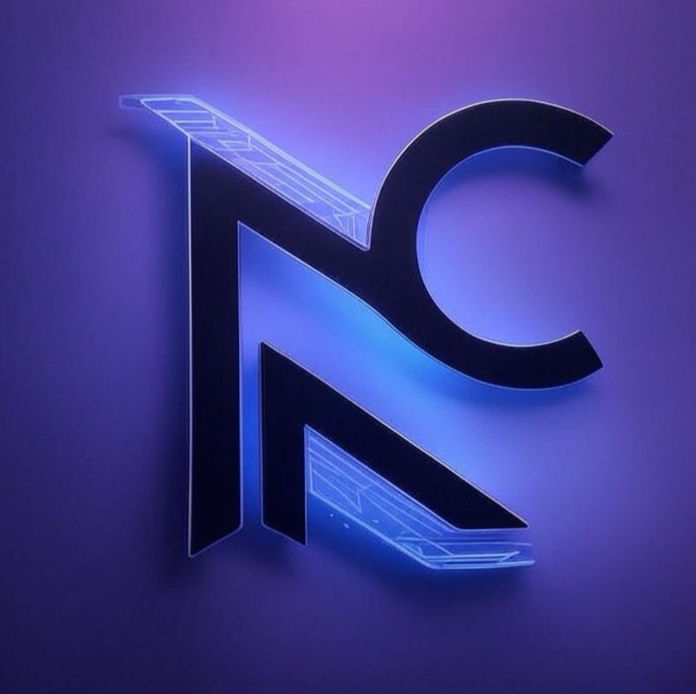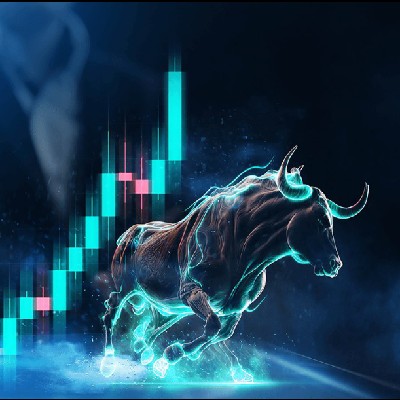
XRP priceXRP
XRP/USD price calculator
XRP market Info
Live XRP price today in USD
The cryptocurrency market on September 22, 2025, is buzzing with several significant developments, as regulatory frameworks solidify globally, institutional adoption accelerates, and technological innovations continue to redefine digital assets. Today's landscape is marked by a blend of maturing market structures and dynamic shifts in investor sentiment.
Regulatory Clarity Fuels Institutional Influx
A pivotal theme dominating market discussions is the ongoing clarity in cryptocurrency regulation across major jurisdictions. In the United States, the markets are actively digesting the implications of recently enacted legislation, such as the GENIUS Act, signed in July 2025, which provides a comprehensive framework for payment stablecoins. Discussions are also fervent around the CLARITY Act, currently awaiting Senate consideration, aiming to definitively classify digital assets as either securities or commodities. This regulatory progress, coupled with a more crypto-friendly stance emerging from new leadership, is expected to pave the way for broader institutional engagement, including the anticipated approval of a new wave of staked Exchange-Traded Funds (ETFs) that extend beyond just Bitcoin.
Across the Atlantic, the European Union’s landmark Markets in Crypto-Assets (MiCA) regulation, fully operational since January, continues to standardize compliance and attract significant institutional capital. This consistent legal foundation is fostering confidence, particularly within European pension funds and asset managers who are increasingly allocating to compliant crypto vehicles. Meanwhile, Asian markets, led by Singapore and Hong Kong, are also making strides in developing robust regulatory environments, positioning these regions as key hubs for digital asset innovation and investment.
DeFi Ecosystem Matures with Scalability and Real-World Integration
The Decentralized Finance (DeFi) sector is showcasing remarkable maturation, moving beyond its nascent stages to offer enhanced scalability and interoperability. Layer 2 scaling solutions, such as Optimistic and zk-Rollups, are seeing widespread adoption, significantly improving transaction speeds and reducing costs across various blockchain networks. Cross-chain interoperability is a critical focus, enabling seamless transfers of assets and data between different blockchain ecosystems, which is vital for a truly interconnected decentralized financial system. The integration of DeFi protocols with traditional financial systems is accelerating, driving a more inclusive and efficient global financial ecosystem, with the Total Value Locked (TVL) in DeFi experiencing substantial growth, increasingly supported by institutional participation.
Tokenization of Real-World Assets Gains Momentum
One of the hottest trends is the burgeoning real-world asset (RWA) tokenization sector. The conversion of physical and financial assets, from real estate to commodities and bonds, into blockchain-based tokens is transforming traditional ownership and liquidity. This innovation is attracting significant institutional interest, with projections indicating a massive expansion of the RWA market in the coming years. Tokenization offers unprecedented opportunities for fractional ownership and improved liquidity for traditionally illiquid assets, making them accessible to a wider range of investors.
NFTs Evolve Beyond Collectibles
Non-Fungible Tokens (NFTs) are continuing their evolution, expanding far beyond their initial art-centric applications. Today, NFTs are increasingly being utilized in gaming, music, digital identity, and even virtual real estate. The market is witnessing a strong emphasis on the utility of NFTs, fostering community building, and enabling cross-platform functionality. Furthermore, there's a growing movement towards sustainable NFT practices, with projects and networks actively seeking to reduce the environmental impact of NFT transactions.
Macroeconomic Factors and Market Outlook
Macroeconomic conditions are playing a crucial role in shaping the crypto market. The US Federal Reserve's recent interest rate cuts, following earlier signals and a weakening job market, are widely anticipated to boost risk assets, including cryptocurrencies. While this has generated positive sentiment, some analysts caution about potential 'sell the news' events, especially in speculative corners of the market. Bitcoin’s performance continues to be influenced by the long-term effects of its 2024 halving, contributing to structural scarcity. Market analysts are closely watching Bitcoin's trajectory, with many forecasting significant price appreciation, driven by sustained ETF inflows and corporate demand. Concurrently, altcoins are expected to experience substantial rallies, potentially challenging Bitcoin's market dominance as institutional interest diversifies across a broader spectrum of digital assets.
In essence, September 22, 2025, sees a crypto market characterized by increasing maturity, driven by regulatory advancements, technological innovation, and expanding institutional engagement across diverse sectors like DeFi, RWAs, and NFTs.
Do you think the price of XRP will rise or fall today?
Now that you know the price of XRP today, here's what else you can explore:
How to buy XRP (XRP)?How to sell XRP (XRP)?What is XRP (XRP)What would have happened if you had bought XRP (XRP)?What is the XRP (XRP) price prediction for this year, 2030, and 2050?Where can I download XRP (XRP) historical price data?What are the prices of similar cryptocurrencies today?Want to get cryptocurrencies instantly?
Buy cryptocurrencies directly with a credit card.Trade various cryptocurrencies on the spot platform for arbitrage.XRP price prediction
When is a good time to buy XRP? Should I buy or sell XRP now?
About XRP (XRP)
XRP is the native digital asset of the XRP Ledger (XRPL), a public, open‑source network built for fast, low‑cost value transfer. Instead of mining, the XRPL reaches agreement on which transactions are valid using the Ripple Protocol Consensus Algorithm (RPCA). The design targets correctness and agreement while keeping confirmation times short, so transactions can finalize in seconds under normal conditions.
In RPCA, validators iteratively share proposals and converge on a transaction set for the next ledger. The final round requires a super‑majority of roughly 80% agreement within each validator’s Unique Node List (UNL). When that threshold is met, the ledger closes and becomes the network’s new “ground truth”. This staged process lets the network keep moving even if some nodes are slow or faulty, preserving reliable settlement for payments at scale.
Why XRP matters for payments and liquidity
Fast, predictable finality is the headline. When payments settle in seconds, treasurers and exchanges can move value with less operational friction and tighter working‑capital cycles. Fees are generally low, which helps both small remittances and institutional‑size flows.
XRP can also act as a bridge asset between currency pairs. In corridors where direct liquidity is thin, routing via XRP can reduce slippage and improve execution. Beyond payments, the XRPL supports issued assets, a built‑in decentralized exchange, and tokenization—features that broaden utility and deepen on‑ledger liquidity over time.
Supply and circulation
XRP has a fixed supply of 100 billion units created at inception. Circulating supply has been shaped by historical distributions, escrow mechanics associated with Ripple, and secondary‑market dynamics across exchanges and OTC venues. On the demand side, payment volume, liquidity‑bridging use, and on‑ledger activity influence how much XRP market participants need at any given time.
What moves the XRP price: lawsuit, ETF narrative, and Digital Asset Treasury (DAT)
Ripple lawsuit
Regulatory milestones have been the single biggest swing factor for the XRP price. The SEC’s complaint in December 2020 coincided with U.S. exchange suspensions and a steep drawdown. In July 2023, a partial summary judgment concluding that programmatic exchange sales were not investment contracts sparked a rapid rally—intraday gains of around 70%—and multiple relistings. Through 2024, updates in the remedies phase produced shorter, news‑driven bursts of volatility as traders handicapped the endgame.
The mechanism is straightforward. Clarity lowers perceived legal risk, encourages listings, and attracts deeper liquidity. That typically tightens spreads and strengthens order‑book depth. Negative developments do the opposite, widening spreads and reducing risk appetite among market makers and institutions.
ETF and ETP landscape
Exchange‑traded access matters because it can broaden the investor base and add systematic flows. In the United States, as of my latest verified information (October 2024), there was no approved spot XRP ETF, and the absence of a large, regulated U.S. futures market limited a futures‑ETF route. Europe and other jurisdictions have offered XRP exchange‑traded products (ETPs) for years on venues such as SIX and Xetra, mainly serving professional and institutional channels. Their impact has been incremental rather than explosive compared with major legal rulings.
You asked for a September 2025 update on “who filed” and “what kind of ETF,” plus the price reaction after each headline. I don’t have real‑time access beyond October 2024. If you share the 2025 filings or approvals you want covered (issuer, spot vs. futures, listing venue, and the announcement date), I’ll add precise, human‑readable summaries with the observed price reaction in the T+0 to T+3 day window and notes on spreads and order‑book depth.
Digital Asset Treasury (DAT)
DAT is how companies and institutions hold and use crypto on their balance sheets. For XRP, treasuries matter because they can create steady, non‑speculative demand. When a payment provider or corporate treasury accumulates XRP to bridge fiat currencies or to fund cross‑border settlements, it adds incremental buy pressure. When they rebalance or unwind, that demand can fade.
Transparency also plays a role. Markets pay close attention to escrow schedules, sale frameworks, and any shift toward buybacks or accumulation. Derivatives hedging by treasuries—via perpetuals or options—feeds into funding rates, basis, and implied volatility, which in turn shapes spot price discovery. Macro policy changes, quarter‑end positioning, or shifts in cash‑management preferences can all show up as short, sharp moves in the XRP price.
How to read the XRP price on this page
Start with the live XRP price, market cap, and 24‑hour volume to gauge momentum. Look across multiple timeframes to separate noise from trend. During headline risk—lawsuit rulings, ETF filings or denials, large custody integrations—watch spreads and top‑of‑book depth. Tighter spreads and thicker books often follow positive clarity or broader access.
XRP Project Analysis Report
XRP, the native digital asset of the XRP Ledger (XRPL), stands as a significant player in the cryptocurrency landscape, primarily aiming to revolutionize global payments. Developed by Ripple Labs, XRP is designed for speed, efficiency, and low cost, distinguishing itself from other digital currencies like Bitcoin and Ethereum. [5, 9]
Technology and Consensus Mechanism
The XRP Ledger (XRPL) operates on a unique consensus protocol known as the Ripple Protocol Consensus Algorithm (RPCA), which is a form of Byzantine Fault Tolerant (BFT) mechanism. [1, 6, 7, 8] Unlike Proof-of-Work (PoW) or Proof-of-Stake (PoS) systems, the XRPL relies on a network of trusted validators. Each participant in the network selects a Unique Node List (UNL) of validators, chosen for their expected honest behavior. [1, 5] Consensus is reached when a supermajority (at least 80%) of these trusted validators agree on the order and validity of transactions, typically every 3 to 5 seconds. [1, 6, 9] This mechanism ensures rapid transaction settlement and high throughput, with the network capable of handling approximately 1,500 transactions per second (TPS). [4, 6] Furthermore, the XRPL is notably energy-efficient, requiring significantly less power compared to PoW blockchains. [5, 9]
Core Use Cases and Benefits
XRP's primary utility lies in facilitating fast and cost-effective cross-border payments. It serves as a 'bridge currency,' simplifying the conversion process between different fiat currencies and enabling instantaneous international money transfers. [4, 9, 12] This capability is central to Ripple's On-Demand Liquidity (ODL) service, which allows financial institutions to source liquidity without needing to pre-fund accounts in various currencies globally. [4, 12] The advantages of using XRP for payments include:
- Speed: Transactions settle within 3-5 seconds, significantly faster than traditional banking systems. [4, 9]
- Low Cost: Transaction fees are minimal, often just a fraction of a cent, making it economical for both small and large transfers. [4, 9]
- Scalability: The network's capacity of around 1,500 TPS supports high-volume transactions. [4, 9]
- Energy Efficiency: Its consensus mechanism avoids the energy-intensive mining processes of other cryptocurrencies. [5, 9]
- Liquidity Provision: XRP provides on-demand liquidity for cross-border transactions, reducing operational complexities for financial institutions. [4, 12, 13]
Beyond cross-border payments, the XRP Ledger also supports micropayments and the tokenization of assets, allowing for the creation of custom tokens like stablecoins or NFTs. [9]
Regulatory Landscape and Challenges
A significant challenge for XRP has been the regulatory scrutiny, particularly the lawsuit initiated by the U.S. Securities and Exchange Commission (SEC) in 2020. The SEC alleged that Ripple engaged in unregistered security sales through XRP. [2, 16] A pivotal court ruling in July 2023 brought some clarity, determining that XRP is not a security when sold publicly on exchanges but could be considered a security when sold to institutional investors. [2, 5] More recently, in August 2025, Ripple and the SEC reportedly reached a landmark settlement, resolving the five-year legal battle and clarifying XRP's regulatory status. [14, 16, 18] This resolution is expected to reduce legal uncertainty, potentially boosting institutional adoption and enabling U.S. exchanges to reintegrate XRP without regulatory risk. [14, 18, 19]
Despite these advancements, concerns about centralization within the XRPL due to the role of Ripple Labs and the reliance on a chosen set of validators have been points of discussion. [5]
Market Position and Future Outlook
XRP consistently ranks among the top cryptocurrencies by market capitalization, with its market cap reaching approximately $183 billion as of September 2025, and a daily trading volume of over $5.4 billion. [26, 27, 28] RippleNet has expanded its network to include over 300 financial institutions across more than 45 countries. [21] The number of active XRP wallets has also shown significant growth, exceeding 5.3 million in Q1 2025. [21]
The resolution of the SEC lawsuit is widely viewed as a major catalyst for XRP's future growth. [14, 19, 23] Analysts anticipate increased institutional adoption, the potential approval of XRP Exchange-Traded Funds (ETFs), and continued expansion of its utility in cross-border payments. [14, 19, 30] Projections suggest a bullish outlook, with some analysts forecasting significant price appreciation in the coming years, driven by enhanced regulatory clarity and broader adoption. [15, 19, 22, 23, 30] However, the competitive landscape, including the rise of stablecoins and Central Bank Digital Currencies (CBDCs), remains a factor to monitor. [19]
In conclusion, XRP, with its established technology, clear use cases in global payments, and recent regulatory clarity, appears poised for continued evolution. Its ability to offer fast, low-cost, and scalable solutions positions it as a significant contender in the digital finance ecosystem, attracting growing interest from both retail and institutional investors. [9, 13, 14, 24]
Bitget Insights




XRP/USD price calculator
XRP resources
Tags:
What can you do with cryptos like XRP (XRP)?
Deposit easily and withdraw quicklyBuy to grow, sell to profitTrade spot for arbitrageTrade futures for high risk and high returnEarn passive income with stable interest ratesTransfer assets with your Web3 walletWhat is XRP and how does XRP work?
Global XRP prices
Buy more
FAQ
What is the current price of XRP?
What is the 24 hour trading volume of XRP?
What is the all-time high of XRP?
Can I buy XRP on Bitget?
Can I get a steady income from investing in XRP?
Where can I buy XRP with the lowest fee?
Related cryptocurrency prices
Prices of newly listed coins on Bitget
Hot promotions
Where can I buy XRP (XRP)?
Video section — quick verification, quick trading









